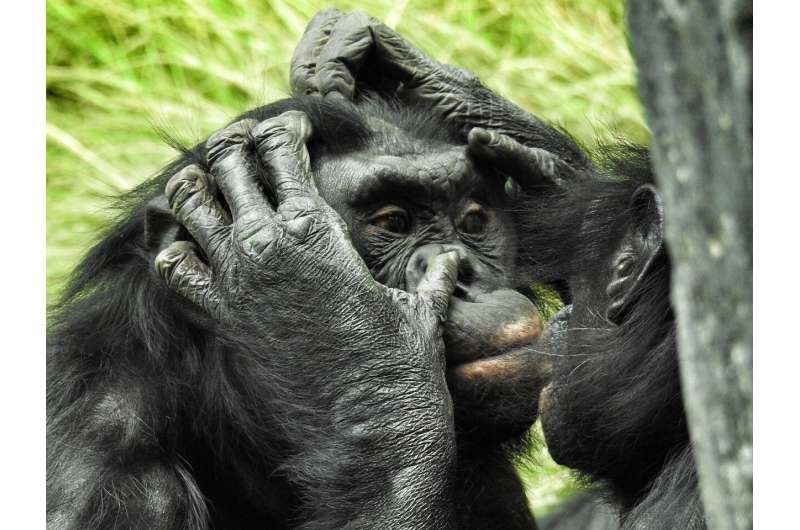This article has been reviewed according to Science X's editorial process and policies. Editors have highlighted the following attributes while ensuring the content's credibility:
fact-checked
peer-reviewed publication
trusted source
proofread
The sense of order that distinguishes humans from other animals

Remembering the order of information is central for a person when participating in conversations, planning everyday life, or undergoing an education. A new study, published in the journal PLoS ONE, shows that this ability is probably human unique. Even the closest relatives of humans, such as bonobos, do not learn order in the same way.
"The study contributes another piece of the puzzle to the question of how the mental abilities of humans and other animals differ, and why only humans speak languages, plan space travel, and have learned to exploit the earth so efficiently that we now pose a serious threat to countless other life forms," says Johan Lind, associate professor in ethology and deputy director at the Center for Cultural Evolution, Stockholm University.
Earlier research at Stockholm University has suggested that only humans have the ability to recognize and remember so-called sequential information, and that this ability is a fundamental building block underlying unique human cultural abilities. But previously, this sequence memory-hypothesis has not been tested in humans' closest relatives, the great apes. The new experiments show that bonobos, one of the great apes, struggle to learn the order of stimuli.
In the recently published book The Human Evolutionary Transition: From Animal Intelligence to Culture (Princeton University Press), ethologists Magnus Enquist and Johan Lind at Stockholm University, and Stefano Ghirlanda, researcher in psychology at Brooklyn College, New York, have launched a new theory of how humans became cultural beings. A central idea concerns the difference in how humans and other animals recognize and remember sequential information.
"We have previously analyzed a large number of studies that suggest that only humans recognize and remember sequential information faithfully. But, even though we analyzed data from a number of mammals and birds, including monkeys, there has been a lack of information from our closest relatives, the other great apes," says Johan Lind.
In a series of experiments, memory abilities of bonobos and humans were tested by having them press computer screens to, among other things, learn to distinguish between short sequences, including pressing right if a yellow square comes before a blue square, or by pressing to the left of the blue square appears before the yellow square.
"The study shows that bonobos forget that they have seen a blue square already five to 10 seconds after it has disappeared from the screen, and that they have great difficulty learning to distinguish the sequences blue-square-before-yellow-square from yellow-square- before-blue-square, even though they have been trained for thousands of trials," says Vera Vinken, associated with Stockholm University, now a Ph.D. student in Great Britain at the Biosciences Institute, Newcastle University.
In contrast, the study shows that humans learned to distinguish the short sequences nearly immediately. However, it still remains to be shown exactly how our closest relatives can remember and use sequential information.
"We now know that our closest relatives do not share the same sequential mental abilities with humans. But even if the results indicate that their working memory works in principle in the same way as in rats and pigeons, no one has yet demonstrated this in practice," says Magnus Enquist, professor emeritus and one of the founders of the Center for Cultural Evolution.
The new results provide further support for the sequence memory-hypothesis, that during human prehistory an ability to remember and process sequences evolved, a necessary mechanism for many uniquely human phenomena such as language, planning ability and sequential thinking.
More information: Johan Lind et al, A test of memory for stimulus sequences in great apes, PLoS ONE (2023). dx.plos.org/10.1371/journal.pone.0290546
Journal information: PLoS ONE
Provided by Stockholm University




















